Hate cars but also need one? Maybe a low-speed vehicle is for you


Cars and city living – it’s a complicated relationship. While cars offer the promise of supposed freedom and convenience, they also come with parking nightmares, fuel costs, and the dreaded rush-hour gridlock. But what if there was a middle-ground solution? Enter the low-speed vehicle (LSV).
LSVs are a federally approved class of motor vehicle that are basically the hybrid car convenience and scooter/bike simplicity. With a healthy and growing car reduction movement in cities, they may be just the answer. Here are some compelling reasons why an LSV could be the perfect fit for you.
Smaller vehicles are easier to park
One of the most significant pain points of city driving is parking. Maybe you’re the kind of person that isn’t ready to give up a car in the city since you can’t carry everything you need with you on a bike. LSVs may not be as simple or easy to park as a bike, but they’re certainly an improvement over a much larger car.
Traditional cars require sizable parking spaces, and in a city, that often translates into expensive parking garages or the ever-elusive street spot. LSVs, being compact, can fit into smaller spaces with ease, reducing the time (and stress) spent circling the block. One of the recent LSVs I tested was a four-seater that measured just 7’9″ long (2.36 m).
Some cities even offer designated parking spots for compact vehicles like these. And in a pinch, you can often get away with parking in quasi-spots, like the edges of parking lots that aren’t technically full spots but also aren’t in anyone’s way or blocking traffic.
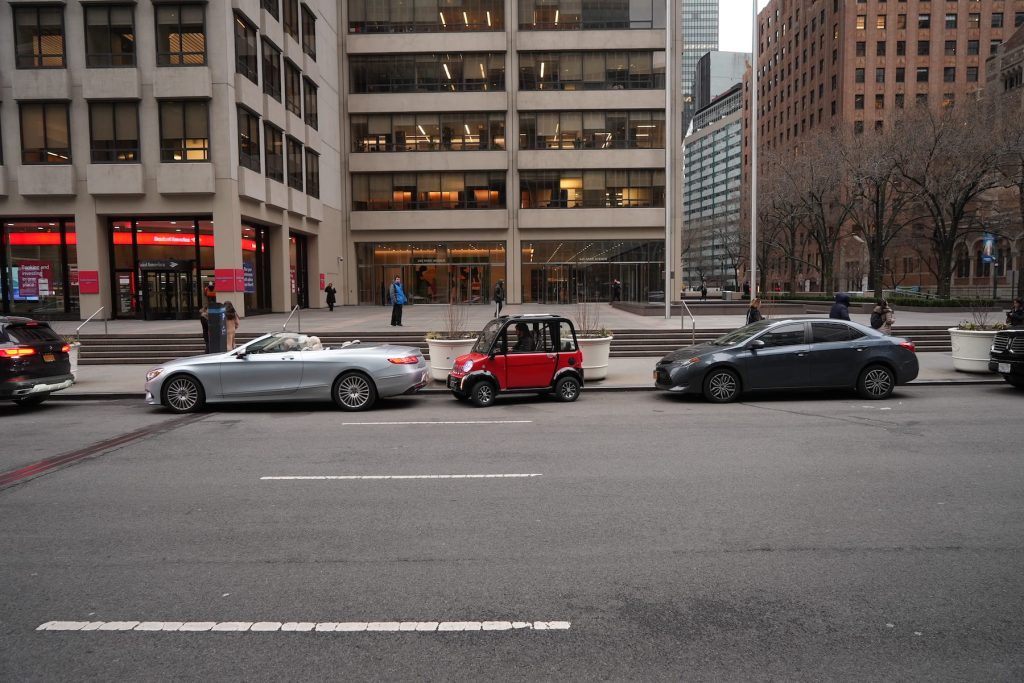
Weather protected tiny vehicles
One of the main factors keeping more people off of traditional bicycles and e-bikes is the weather. While many cyclists will tell you that “there’s no bad weather, only bad clothing,” it can still be difficult to convince some new riders to suit up in rain suits.
But many LSVs are fully enclosed like a traditional car, meaning rain isn’t an issue. Some models even have both heaters and air conditioning, making them excellent for winter and summer driving in comfort.
Even the more golf cart-style LSVs will often have options for soft doors to enclose them from the rain. Those doors can be removed in the summer for easy-going driving with plenty of fresh air.
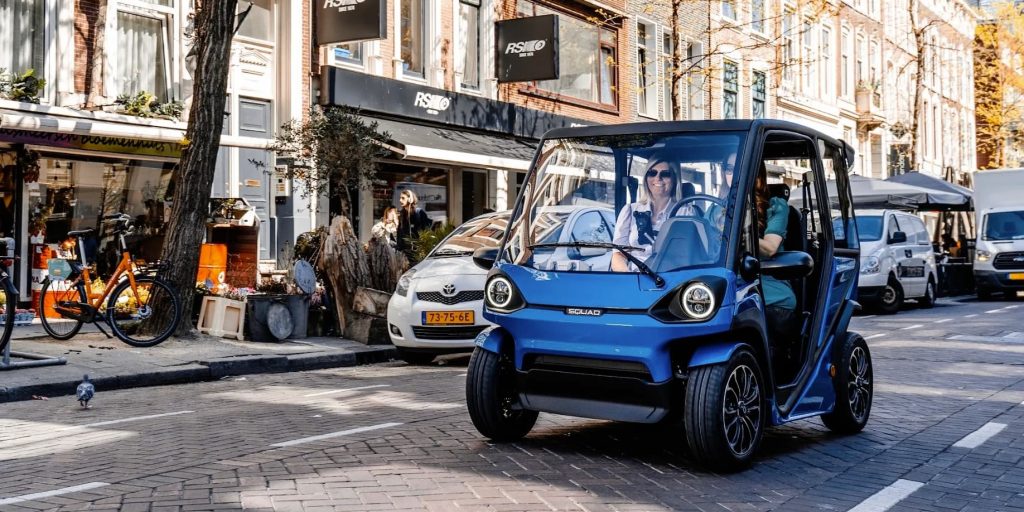
LSVs can save you money
Say goodbye to hefty fuel bills! Most LSVs are electric, translating to pennies per charge compared to the soaring costs of gasoline. Even compared to electric cars, LSVs are much more efficient and so their charging bill is a mere fraction of a Tesla’s. Charging an LSV can cost as little as a single dollar depending on local electricity rates. Even in areas with expensive electricity, you’ll never spend more than the cost of a cup of coffee to “fill up your tank” in an LSV.
Maintenance is also typically less expensive than traditional vehicles, and the upfront cost of an LSV is usually significantly lower than that of a regular car. In fact, many LSVs are as inexpensive as golf carts, yet have the benefit of more safety features and of course are street legal.
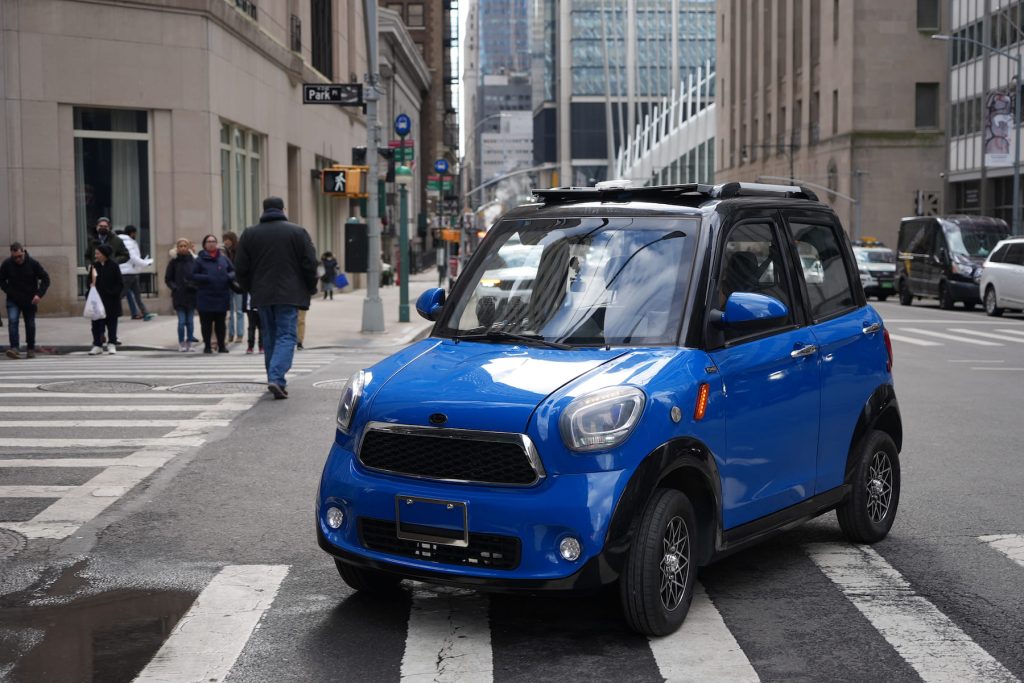
Low-speed vehicles are more environmentally friendly
If you’re eco-conscious, LSVs are a dream come true. Emitting zero pollutants from their electric drivetrains, they’re a far cry from their gas-guzzling counterparts. Many young urban residents can’t afford a new electric car. Even if you can, you likely don’t drive enough miles in the city to justify carrying around a heavy and expensive 300+ mile (500+ km) battery.
By opting for an LSV instead, you’re not only making a statement about sustainable transportation, but you’re actively reducing your own carbon footprint.
And if you consider that your environment includes the people around you, LSVs are also healthier in another way: They’re significantly less deadly. The growth of cars, known as vehicle bloat, means that massively heavy trucks and SUVs are killing more cyclists and pedestrians than ever before. Since the lethality of a vehicle increases dramatically with both its speed and weight, LSVs are much safer than typical cars for everyone around them.
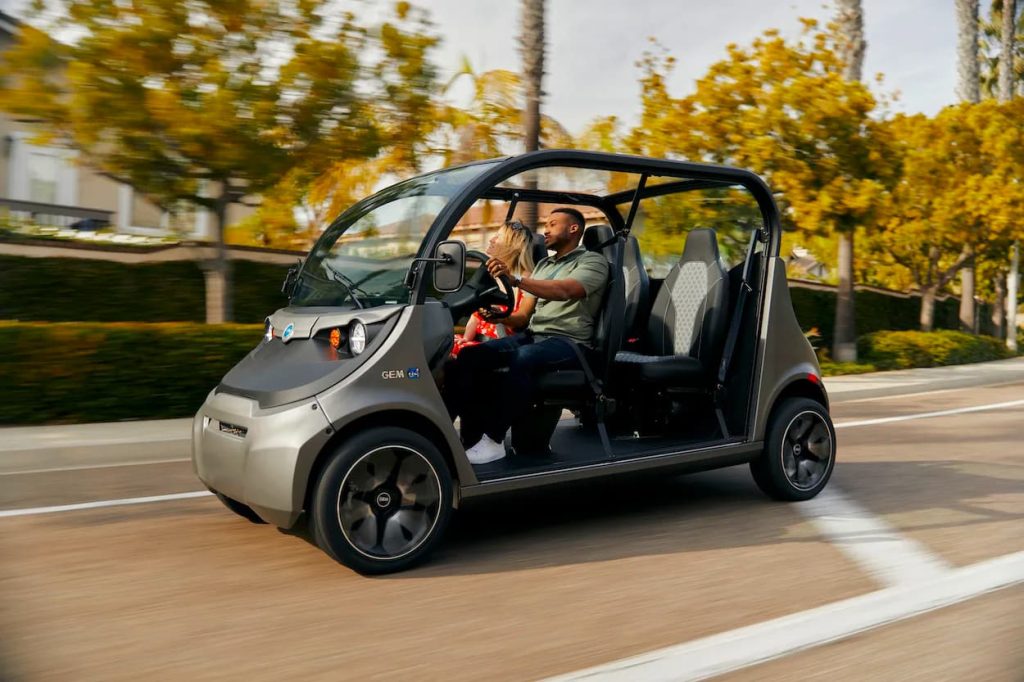
Cruise through a city with ease
The compact size of LSVs isn’t just good for parking. It also means LSVs can weave through traffic more efficiently.
This makes them perfect for quick trips across town or for those who prefer to avoid the main thoroughfares.
I once drove through Manhattan and Brooklyn in an LSV and found that at times I could use it almost like a bicycle or motorcycle to slip around gridlocked traffic. That’s not going to be the case all the time, but no one can debate the fact that smaller cars are more nimble, especially in crowded cities.
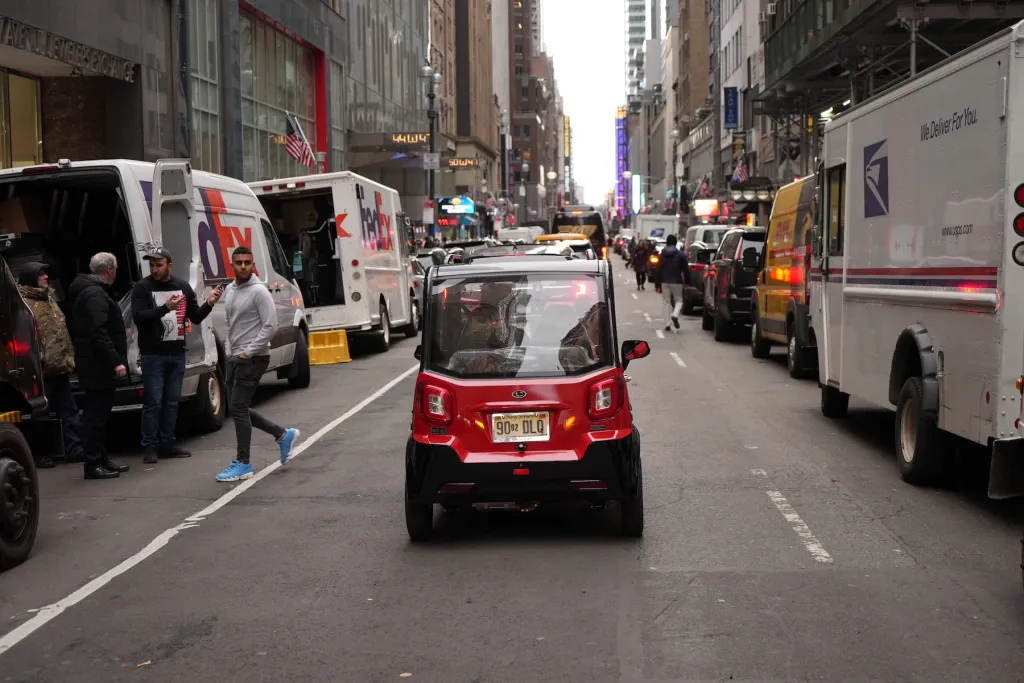
Less hassle, more freedom
Traditional car ownership in a city can feel like a chain rather than freedom. There are insurance premiums, annual checks, licensing, and the ever-present risk of theft or damage.
LSVs usually come with less red tape. Plus, their simpler mechanics mean there’s less that can go wrong, offering peace of mind.
While some jurisdictions require the same licensing and registration as traditional motor vehicles, others make LSVs ownership easier and less of a hassle. You’ll need to check your local regulations to determine how much easier it is to own an LSV in your city.
Not right for everyone, but great for many
Low-speed vehicles may not fit the needs of everyone out there. But with more cities adopting speed limits in the 20-30 mph range, these 25 mph vehicles can often travel anywhere in a city while being much more convenient to use. There are even great apps that can show you exactly which roads are LSV friendly.
If you’ve been feeling the pressure of city life with a car and yearn for a simpler, more efficient mode of transportation, it might be time to consider a low-speed vehicle. Embrace the freedom without the fuss and make your urban journeys a joy, not a chore!
Or, you know, you can be brave and try switching away from four-wheels all together for an electric bicycle!
FTC: We use income earning auto affiliate links. More.